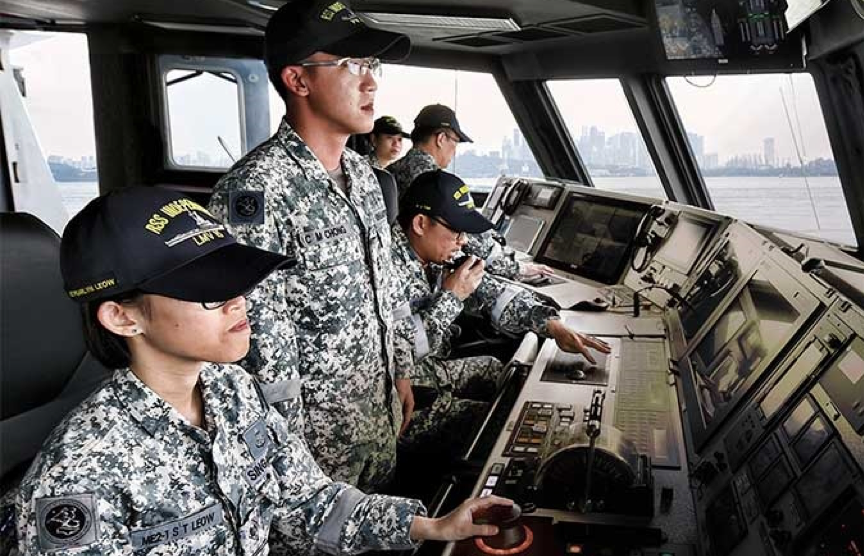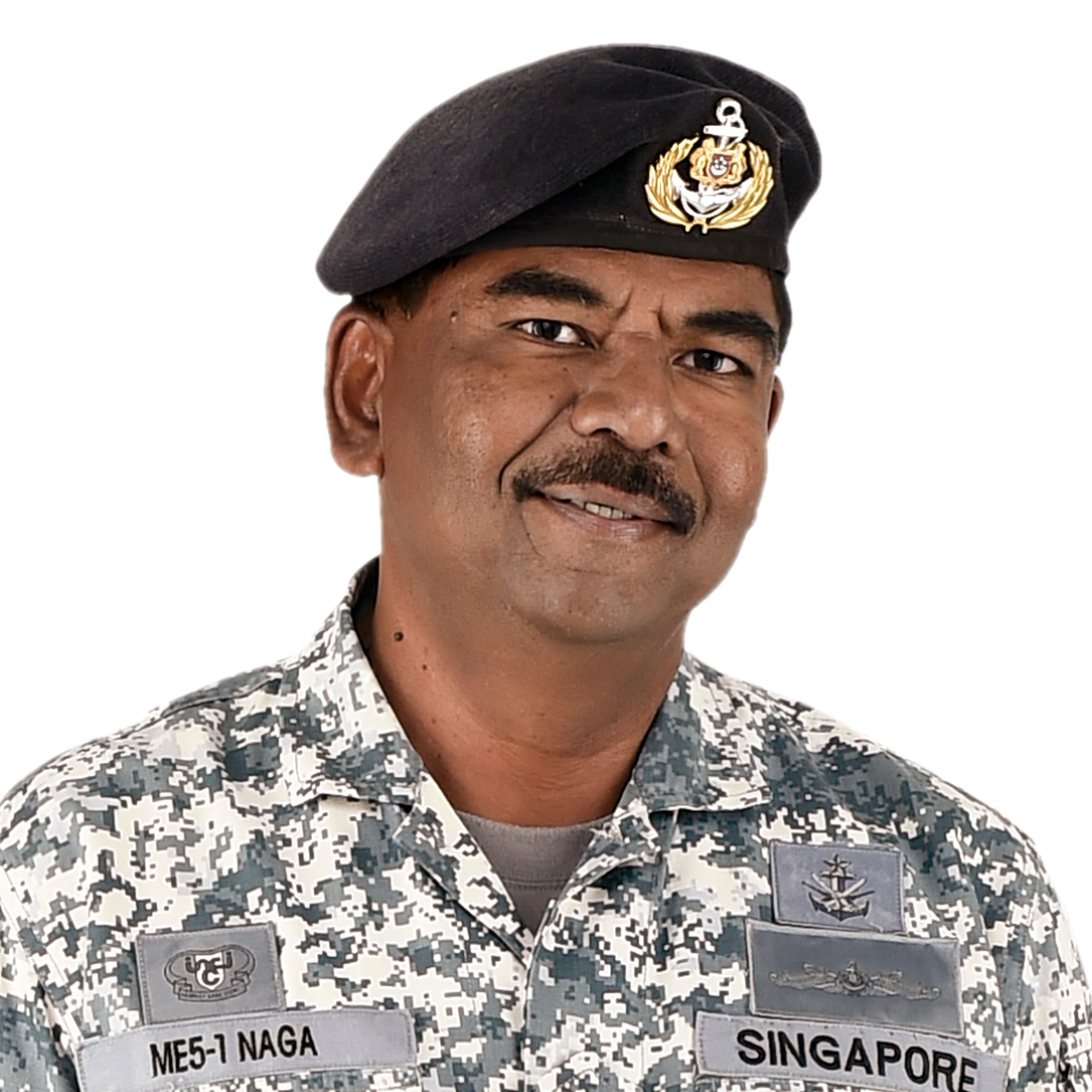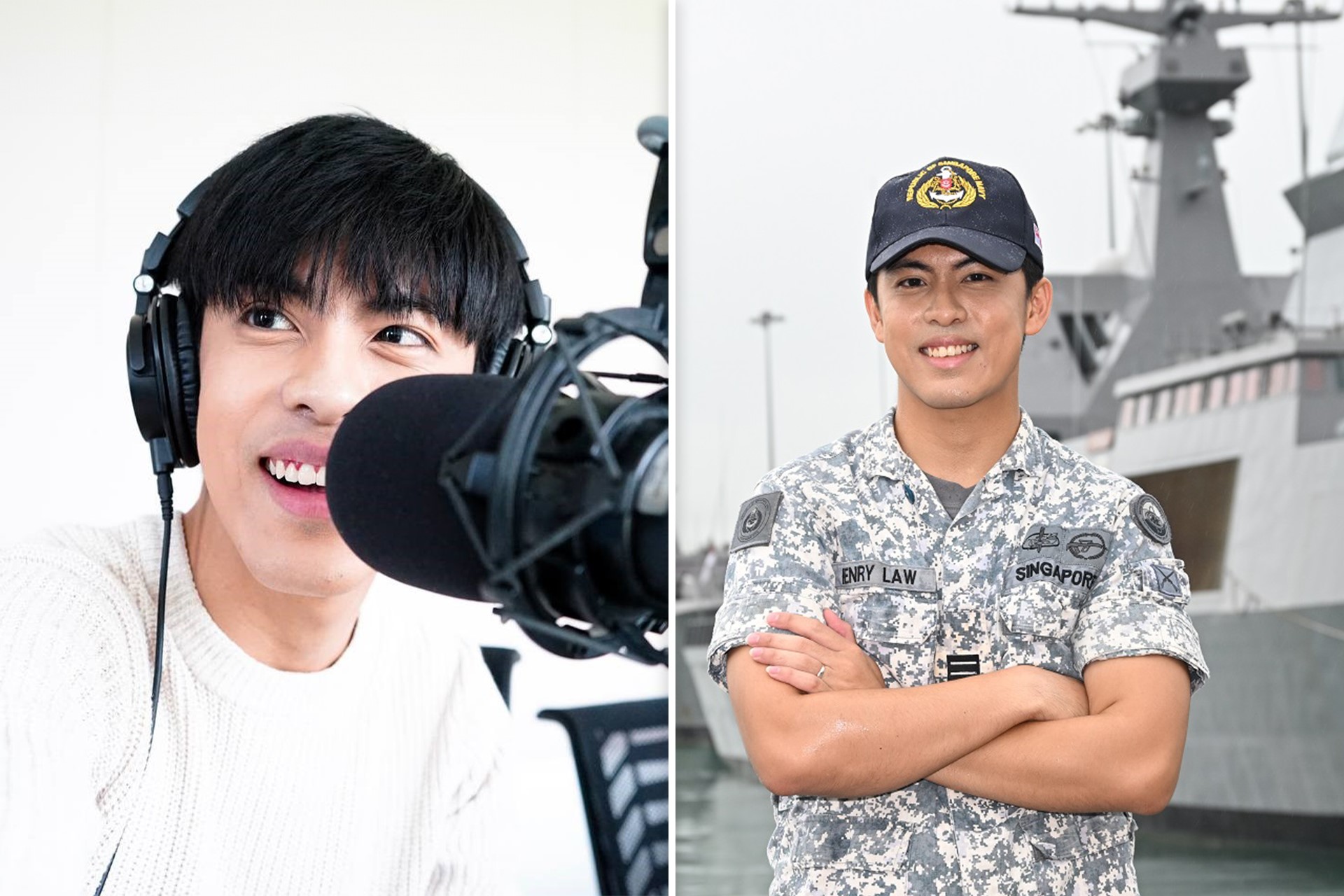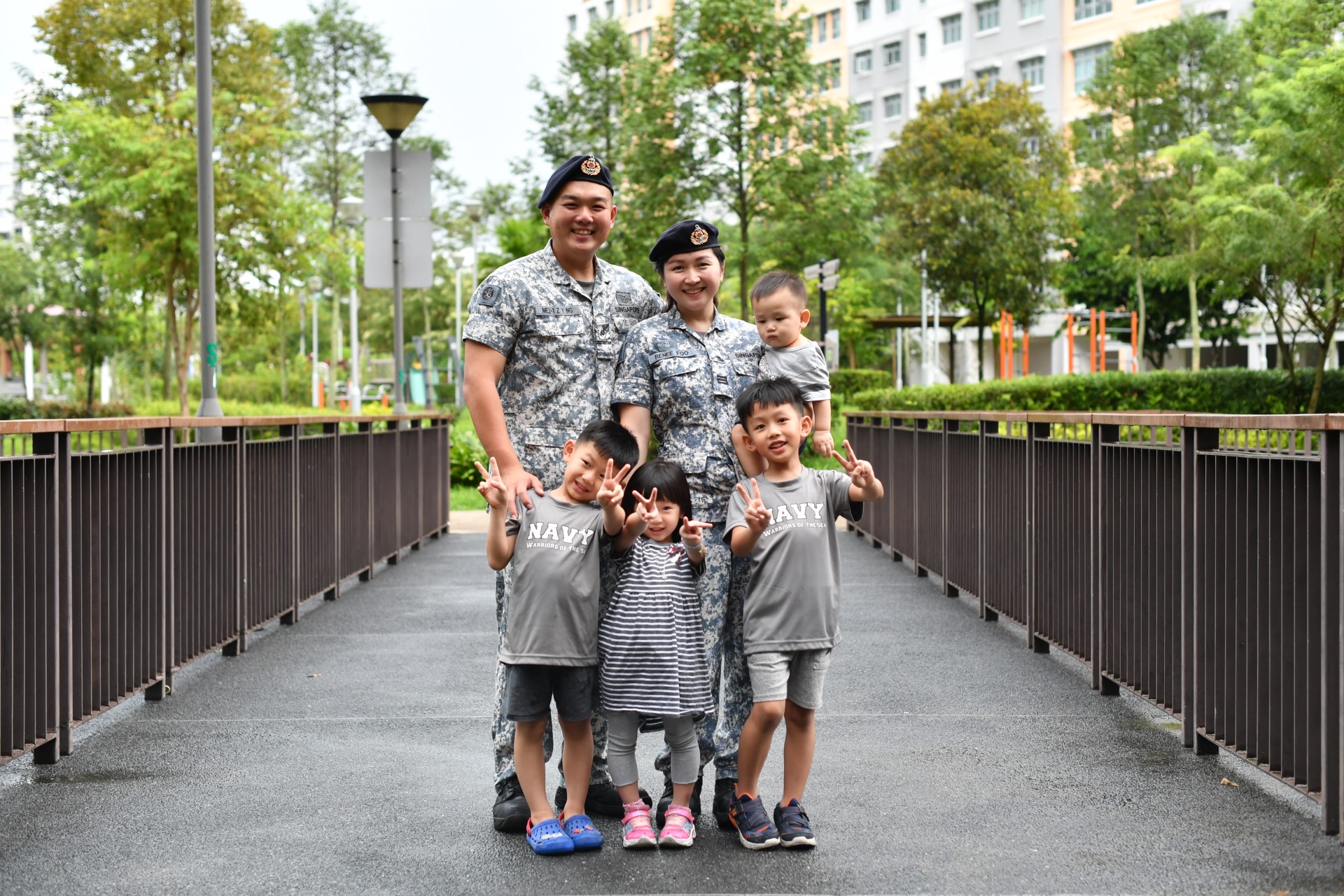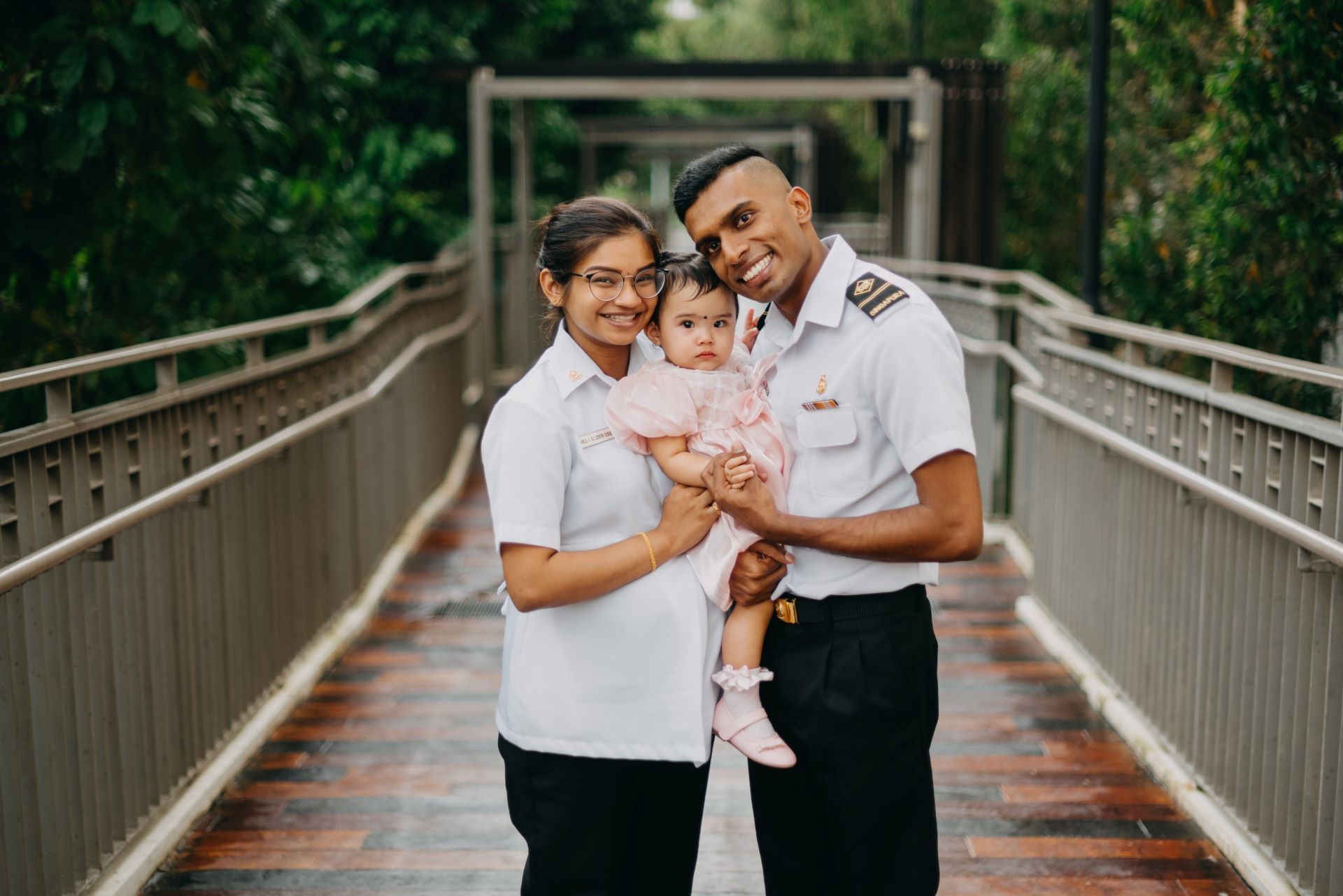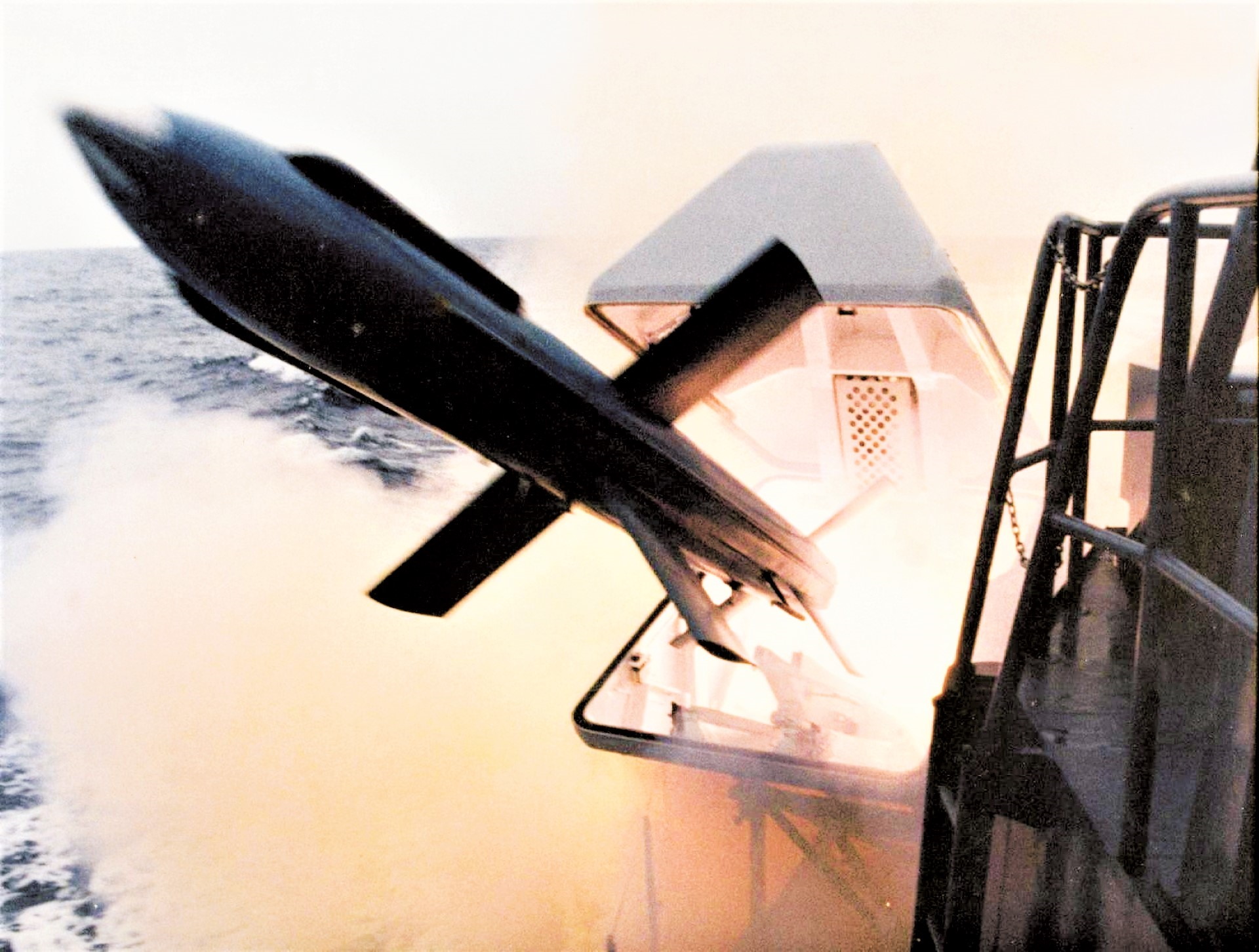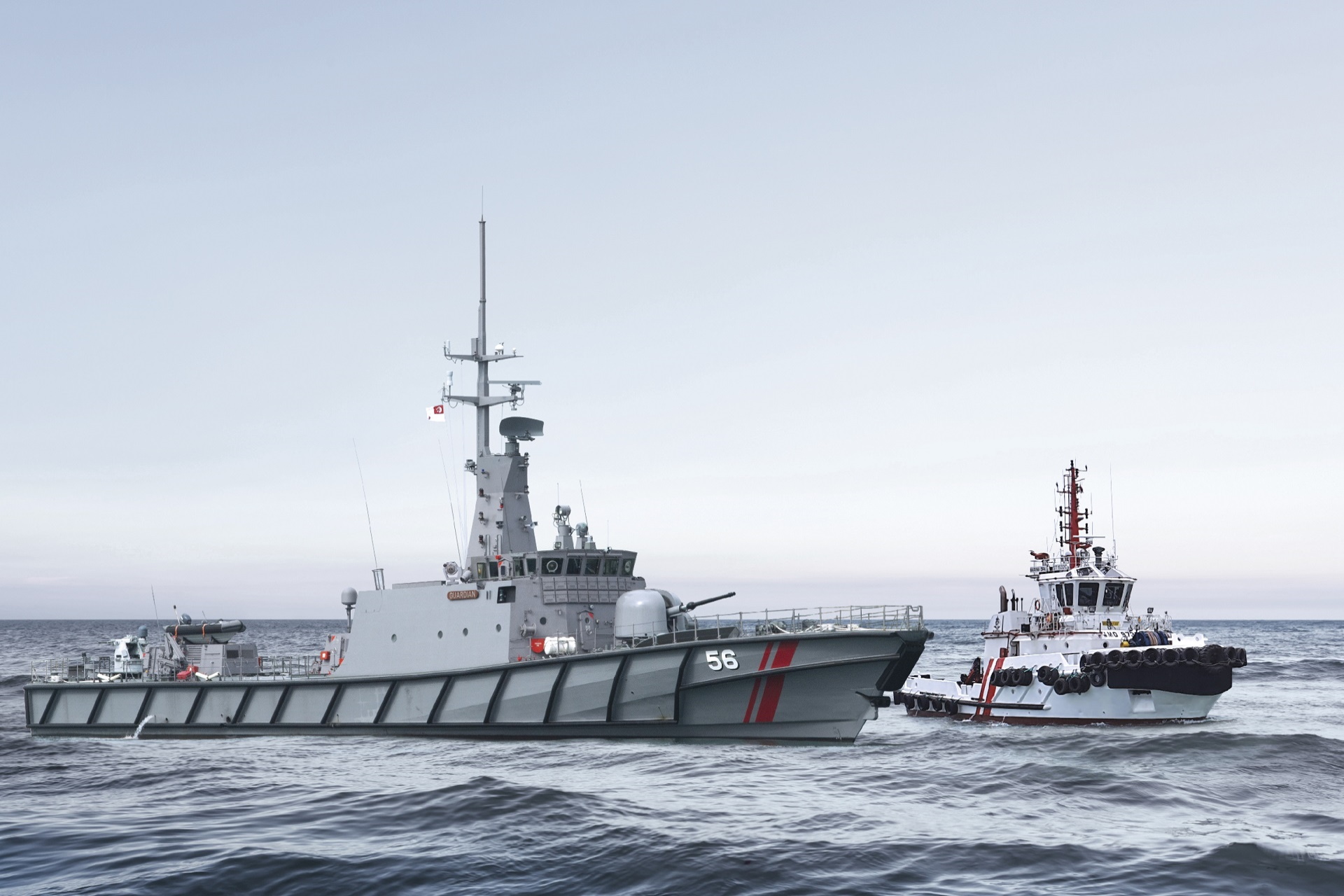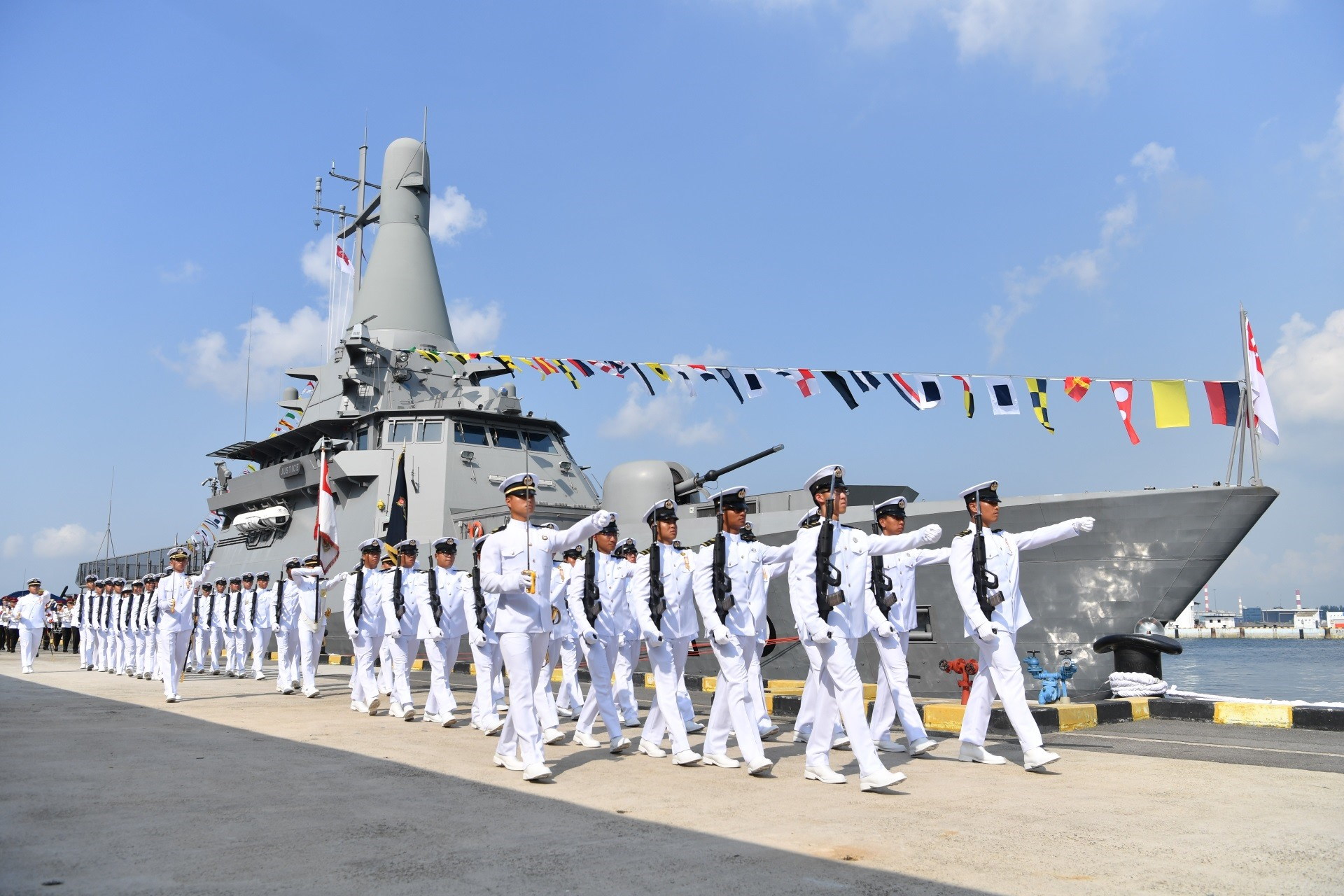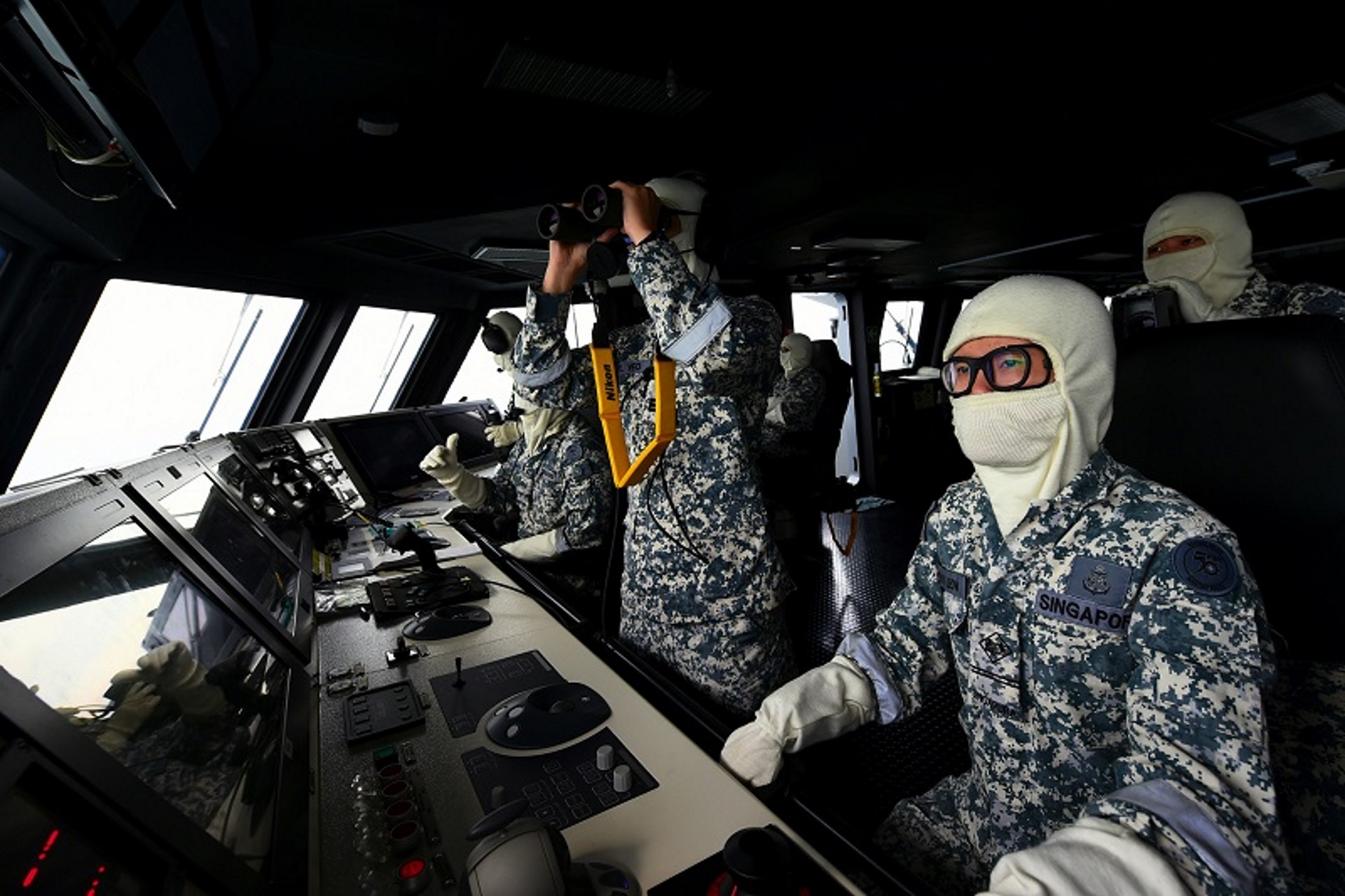RSN50: Making waves
For the past five decades, the Republic of Singapore Navy (RSN) has kept Singapore's waters safe. As the Navy celebrates its 50th anniversary, we take a look at its transformation over the years into a top-class naval forceStory // Tan Jun An
Photos // Kenneth Lin & Courtesy of Navy Information Centre
5 May 1967
The Singapore Naval White Ensign was raised for the first time on this day at 5:55pm.
Formerly known as the Singapore Naval Volunteer Force (SNVF), the RSN only adopted its current name on 1 Apr 1975. The first SNVF Headquarters was on RSS Singapura, which was docked at Telok Ayer Basin. The ship was a Japanese minelayer turned over to the British in 1947 and was later assigned to the SNVF.
When Singapore decided to establish a navy after Independence, it had only three ships -- RSS Panglima, RSS Bedok and RSS Singapura -- to ply its coastal waters and protect the nation from maritime threats.
Ms Judy Foong, 69, was part of the crew who trained at the very first Navy headquarters. The former Leading/SWANS in the Singapore Women's Auxiliary Naval Service (SWANS) said: "I grew up in turbulent times during the 1950s and 60s. As a loyal citizen of my homeland, I always wanted to serve the country, and that pushed me to join the SWANS in 1964."
Being part of the parade when the Naval White Ensign was raised for the first time, Ms Foong felt an overwhelming sense of pride. "I was very happy as the ceremony signified that Singapore was finally truly independent and starting to build up defensive capabilities of its own."
June 1968
A $30-million contract was signed for the construction of six Independence-class Patrol Craft (PCs). The first two were built in Portsmouth, England and the remaining four were built locally.
The PCs could reach speeds of more than 30 knots and were the Navy's most well-equipped ships at the time.
RSS Independence and two of its sister ships were armed with a 40mm main gun and a 20mm Oerlikon gun, while the remaining three vessels had a 76.2mm main gun and a 20mm Oerlikon gun.
Together, the six vessels formed the backbone of the Navy in the 1970s and they were tasked with maintaining maritime security, which included dealing with smuggling, sea robberies and illegal immigrants.
They were all commissioned by end-January 1972 and eventually retired from service in the late 1990s.
January 1975
The first three Missile Gunboats (MGBs) were commissioned after two years of sea trials and crew training, while the remaining three were commissioned in February 1976. They were all equipped with a 57mm and a 40mm gun, and the Gabriel Anti-ship missile.
RSS Sea Wolf fired two Gabriel missiles in March 1974. Both missiles found their target during an exercise, and the RSN went down in the history books as the first navy in the region to have successfully fired an anti-ship missile.
On 13 May 2008, the fleet of MGBs were decommissioned in a sunset ceremony officiated by then-Chief of Navy Rear-Admiral Chew Men Leong at Changi Naval Base as 185 Squadron (SQN) was converted into a frigate squadron, which operates the Formidable-class frigates.
1978
Six County-class Landing Ships Tank (LSTs) came into service, enabling the RSN to participate in various overseas exercises. They were also involved in Midshipman training, and Humanitarian Assistance and Disaster Relief (HADR) operations. Did you know the first LST was leased from the United States Navy (USN) at the token price of one dollar?
Military Expert (ME) 5 Subramani Achari Nagara Raja, 57, was among the first crew on board RSS Intrepid as she made her maiden voyage overseas in 1977.
"I was very excited to go on my first overseas trip! We worked very hard in the shipyard to get everything ready and we were very glad when we saw the ship hit the waters," said the Weapon Systems Military Expert.
"During the sail, we could only rely on celestial navigation as there was no Global Positioning System back then. This got us young sailors very excited as we were exposed to this technique for the first time."
The County-class LSTs were eventually decommissioned and replaced by the current Endurance-class LSTs which came into service in 2000. The new LSTs are able to travel 30 percent faster than their predecessors, and have greater carrying capacity.
Responsible for the transportation of military personnel and supplies during wartime, the LSTs also participate actively in HADR operations when crises strike.
In December 2004, RSS Endurance and two other LSTs carrying emergency supplies and medical help were deployed to Aceh, Indonesia when a tsunami struck on Boxing Day that year.
The LSTs also provide support to the Singapore Armed Forces' (SAF's) Super Pumas and Chinooks in their missions, allowing the helicopters to stay longer out at sea.
8 Jun 1980
RSS Swift Warrior, one of 12 Swift-class Coastal Patrol Craft (CPCs), was launched. By 20 Oct 1981, the CPCs were all commissioned by then-Defence Minister Howe Yoon Chong.
Operated by a crew of 15, the CPC was designed and built locally to take over some of the MGBs' daily patrols. Training on the CPCs provided invaluable experience for many young aspiring naval officers, as most of them first commanded a CPC before moving on to other ships.
The CPCs were eventually decommissioned and transferred to the Police Coast Guard in the 1990s when the SAF acquired the new Fearless-class Patrol Vessels (PVs). The commissioning of the first three PVs on 5 Oct 1996 enhanced the RSN's anti-submarine capabilities. The first six PVs were equipped with a sonar system to detect underwater threats such as submarines, while the remaining six were built for coastal protection.
Early 1980s
The Naval Divers began to move into underwater combat to add to the RSN's defensive capabilities. Formed in 1971 as the SAF Diving Centre, the Naval Diving Unit initially undertook support roles such as checking ships' hulls and performing underwater ship repairs.
Naval divers started to attend rigorous courses overseas such as the Basic Underwater Demolition, Explosive Ordnance Disposal and the USN Sea Air Land (SEAL) Course. This equipped them with the ability to go on a wider spectrum of operations such as mine-clearance and combat diving.
8 Jun 1988
The first of six Victory-class Missile Corvettes (MCVs) was launched when RSS Victory, which was built and launched in Germany, joined the RSN's fleet. The other five ships were built locally by Singapore Technologies Marine (ST Marine). Armed with sonars, anti-submarine torpedoes and Harpoon missiles, the MCVs sharpened the RSN's underwater warfare capabilities.
ME4 (NS) Goh Chung Hean, currently Chief Engineering Officer in 192/193 SQN, was part of the crew on RSS Victory who won the Best Ship Award in 1999 and 2000. "It gave me the chance to learn many things and has helped me get to where I am as a Vessel Manager in a shipping company."
"As long as you're able to lead well, you can turn an average crew into a motivated one who are willing to put in time and effort to perfect their skills," added the 41-year-old.
In the mid-90s, the MCVs were equipped with Barak surface-to-air missiles. The latest upgrade in 2012 saw the ships being outfitted with the ScanEagle Unmanned Aerial Vehicle (UAV). This addition has given the MCV new "eyes" for better situational awareness.
7 Sep 1995
The Navy's first Damage Control Trainer (DCT) was unveiled in Sembawang Camp by then-Senior Parliamentary Secretary for Defence and National Development Matthias Yao for better training realism.
Built to mimic an actual warship, the locally made DCT was able to simulate emergencies on board ships.
Smoke and water could fill the room to provide realistic training conditions to test the crew's reactions to situations as flooding. Compared to the static trainer of the past, the new one could also be swung to simulate the rolling effect of a ship at sea.
In 2011, it was replaced by a new DCT. Now located in Changi Naval Base (CNB), the trainer is twice the size of its predecessor and has more than 20 training rooms for sailors to hone their skills.
8 Apr 1996
Navy personnel were sent to a submarine training programme by the Royal Swedish Navy to get basic knowledge and experience in operating submarines.
The pioneer crew trained in the freezing depths of the Baltic Sea and had to learn to get used to the claustrophobic environment in a submarine. Their perseverance, however, paid off: In about two years, they were able to sharpen their skills effectively and establish operating procedures.
The first submarine -- RSS Conqueror -- sailed into Singapore's waters on 2 May 2000. The submariners' next challenge was learning to operate the boat in the region's shallow waters and busy straits.
Thanks to intensive training, the RSN had an operational submarine squadron in less than eight years.
Jul-Dec 1998
In 1998, Indonesia suffered a famine that severely affected its food supply. The RSN offered humanitarian aid to villages across Indonesia, delivering 15,000 tonnes of rice worth $5 million.
The supplies were shipped from Thailand to Indonesia via then-Merchant Training Ship MV JAYA VENUS, which was fully operated by Operationally Ready National Servicemen who were called back on a voluntary basis. About 280 military personnel were involved.
2-14 Oct 2000
The RSN played host to navies from Japan, the Republic of Korea and the United States in Exercise Pacific Reach 2000, the first multilateral submarine rescue exercise held in the Western Pacific region.
In total, the four countries deployed 600 military personnel, four submarines, four ships and various submarine rescue assets.
During the exercise, the navies planned and held joint rescue drills for simulated distressed submarines and their crew. They also conducted rescue operations with each of the foreign submarine rescue systems, strengthening interoperability among the navies.
The RSN has continued to participate in this exercise over the years, with the most recent one held in Korea's Jinhae Naval Base and Jeju Naval Base in 2016. Taking part with submarine rescue support vessel MV Swift Rescue, the RSN conducted rescue drills with submarines from the Republic of Korea Navy and the Royal Australian Navy.
2003-2008
Operation Blue Orchid, the SAF's series of deployments to the Northern Arabian Gulf in contribution to United Nations peace support and international security operations, began. The first was on 27 Oct 2003, when the SAF despatched an LST, RSS Endurance, a C-130 transport aircraft and 192 personnel.
Over the five years, the RSN sent five LST deployments into theatre. The LST is usually operated by a crew of about 80, but its carrying capacity was stretched to accommodate up to 180 in order to include military personnel who provided logistical support and maintenance help to ensure that the LSTs could stay out at sea for longer periods.
Each of the deployments lasted for three months except for the first which lasted two months. The RSN crew could see the Rigid Hull Inflatable Boats (RHIBs) being sent out as many as 100 times during each mission, and they radioed out about 600 queries in a 30-day period. The LSTs also provided refuelling and logistical support for the naval helicopters of the coalition.
Besides providing military training and medical assistance to Iraqi personnel, the RSN helmed the operation on the second sea deployment when it was appointed as the Surface Action Commander. It was in charge of coordinating the efforts of other navies in order to protect an essential Iraqi oil terminal.
Operation Blue Orchid concluded on 20 Dec 2008 with the return of LST RSS Resolution. About 1,000 SAF personnel were sent in aid of the efforts to rebuild post-war Iraq, with some being deployed on multiple tours.
21 May 2004
CNB was officially opened. Dubbed an "intelligent" base, it was built on 1.28 sq km of land and replaced Brani Naval Base to accommodate the Navy's growing fleet.
The construction of CNB incorporated various new technologies such as the High Performance Magazine. The first fully automated ammunition storage in the SAF, it efficiently stored ammunition underground in a more compact manner to reduce manpower and land use.
Other technological innovations included the Automated Storage and Retrieval System, which allows any pallet to be retrieved or stored within 20 seconds by a mechanical arm. The warehouse only occupies the size of a football field, but has a capacity of 17,000 sq m and is able to hold up to 17,000 pallets and 50,400 storage bins.
CNB is also home to several training simulators, such as the Ship Handling Simulator, Submarine Simulator and Dive Trainer, which provide sailors with a realistic environment to effectively and safely hone their skills.
From 2009
The RSN has actively participated in a multinational effort to secure the waters in the Gulf of Aden from piracy and maritime security threats. Under the ambit of the multinational Combined Task Force (CTF) 151, the RSN has responded to calls for assistance, facilitated the sharing of information to coordinate operations, and kept a close watch on vulnerable merchant vessels in the piracy hotspot.
An LST was deployed in the 2009, 2010 and 2011 deployments, while a Formidable-class frigate, RSS Intrepid, was deployed in 2012 for the first time. Frigate RSS Tenacious was involved in 2014 as part of the SAF's fifth deployment. A Fokker F50 maritime patrol aircraft was deployed for a detachment in 2011.
The SAF also led the CTF 151 task group in 2010, 2011 and 2013, with Rear-Admiral Cheong Kwok Chien recently taking over the helm in 2016 to police the piracy hotspot.
Since 2009, Singapore has sent four SAF command teams, five task groups (consisting of either an LST with two Super Puma helicopters or a frigate with a naval helicopter), and one maritime patrol aircraft detachment.
28 Dec 2014
AirAsia flight QZ8501 mysteriously vanished from the radar of air traffic control. The plane, carrying 162 passengers from Surabaya, Indonesia to Singapore, could not be contacted.
This sparked an international search-and-rescue effort to find the passengers and crew. The RSN responded swiftly, and deployed frigate RSS Supreme and MCV RSS Valour to aid in search operations.
RSS Valour was the first international vessel to reach the search area in the Java Sea.
Subsequently, LST RSS Persistence, rescue vessel MV Swift Rescue, Mine Countermeasure Vessel RSS Kallang, and a six-man Autonomous Underwater Vehicle team were also deployed.
On 14 Jan 2015, the main fuselage of the plane was located by MV Swift Rescue. It informed the authorities and returned to CNB four days later, marking the end of the SAF's 22-day deployment in the search for the ill-fated flight.
18-29 Jun 2016
RSS Steadfast became the first non-USN ship to lead a Multinational Group Sail to participate in the Rim of the Pacific (RIMPAC) Exercise — the world's largest maritime exercise. It led two other Navy ships from the Japan Maritime Self-Defence Force (JMSDF) and the USN from Okinawa, Japan to Hawaii, United States.
Hosted by the USN in the waters off Hawaii from 1 Jul to 5 Aug, the biennial exercise serves as a vital platform for RSN personnel to hone their combat skills and forge strong working relations with other navies.
Exercise RIMPAC 2016 was also the first time that RSS Steadfast took on the role as Task Force 170's (TF170's) Anti-Surface Warfare Commander. This meant that it was responsible for the planning and execution of surface warfare serials for 10 other multinational ships, helicopters and maritime surveillance aircraft in TF170.
Captain Jason Boyd from the Canadian Navy, who served as the Sea Combat Commander for one of the task groups under TF170, commended the RSN's performance: "We have a tremendously talented line-up of ships in our task group and RSS Steadfast has certainly impressed me in the manner in which she prepares for events and forward-thinks to anticipate any conflicts or issues that may be on the horizon.
"They have come to Exercise RIMPAC tremendously prepared, well-trained, and with a can-do attitude. Though they may be one of the smaller navies participating in this exercise, they are certainly proving themselves to be one of the most capable thus far."
5 May 2017
The first of eight Littoral Mission Vessels (LMVs) was commissioned as RSS Independence on 5 May as part of the Navy's 50th anniversary celebrations. Measuring 80m long, the locally designed and built LMVs are about two-and-a-half times bigger than the PVs, and are set to replace the latter in protecting Singapore's waters.
The LMVs are equipped with advanced technology and latest innovations, enabling each to be operated by a lean crew of 23
For example, in the past, the Bridge, Combat Information Centre and Machinery Control Room were located in different parts of the ship, but now they are all located in an Integrated Command Centre for better synergy in managing the navigation, engineering and combat functions.
All the LMVs are expected to be fully operational by 2020.
ME3 Ng Bee Bee, who was Coxswain of the recently-decommissioned Fearless-class PV RSS Independence, said: "I'm glad to see the name being passed down to the LMV as it serves as a reminder of the importance of safeguarding our way of life."
"I have no doubt that RSS Independence will be an important platform to train and nurture professional sailors who will remain sharp and vigilant in defending Singapore's waters," added the 39-year-old Naval Warfare System Expert.
RSN50 Celebrations
Launched on 10 Dec 2016 as part of the RSN's 50th anniversary celebrations, the RSN50 logo (pictured) was designed to represent the Navy's aspirations for the future while remembering the past.
The "5" is shaped as a ship's bow and signifies how the RSN has taken great strides to attain the world-class standard it possesses today. The "0", which is shaped like a ship's wheel, symbolises the contributions of the earlier generations of sailors. The mariner's compass represents the values that the RSN holds dear since its early years as it continues to establish its presence on the international stage. The tagline "Maritime Nation, Maritime Force" emphasises the important role that the Navy plays to keep Singapore's coastline safe.
In addition to the new logo, other events will be held to commemorate the efforts of Navy personnel over the past 50 years.
A children's compendium storybook, which consists of four books, will be released throughout the latter half of the year, with storytelling sessions for the first and second books to be held in June. The RSN hopes that these books will help parents better explain to their children about the role of the Navy and what it does for Singapore
A Doodle Wall was launched on 5 May by Prime Minister Lee Hsien Loong, Deputy Prime Minister Teo Chee Hean, and Defence Minister Dr Ng Eng Hen. The wall will be part of a roving exhibition, and the public will be invited to colour on the wall when it is moved to SAFRA Punggol, SAFRA Toa Payoh, Singapore Discovery Centre and VivoCity. This allows the public to express their creativity while learning about the RSN's history.
In November, the public can enjoy RSN50@Vivo, which allows them to get up close and personal with many naval assets.
